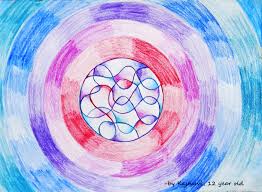
What is Free Hand Sketching?
Free Hand Sketching is used to transfer ideas from the abstract world of engineering to the real world in 2D and 3D. The
notation is the international engineering language used for everyday communication in the engineering community.
Freehand drawings are also used to quickly represent an idea in graphical form to non-technical people.
It improves communication between all team members and between clients. The
Free Hand Sketch is one of those sketches without gauges.
The image was drawn with a pencil and an eraser.
These parcels are drawn before the actual parcel of each type because it takes less time.
Having drawn such a picture, after careful consideration, make necessary changes if necessary.
The actual drawings are then prepared.

Freehand drawing tool.
Drawing freehand sketches requires the following tools.
1. Soft pencil.
2. Eraser.
3. Sharper.
4. Drawings.
5.
chart table.
The importance of freehand sketching.
Freehand drawing is very important in practical work, because the draftsman must check the drawings of each object with the engineer.
When checking a complete drawing, a lot of time is wasted making changes if necessary.
Since there is less time for freehand drawing, one must first rely on such drawings.
Principles of freehand drawing.
Freehand drawing should follow these principles:

1. To see through the object, think about its purpose and concept.
2. Select View to examine more detailed aspects.


3. Specify the space on the drawing according to the view size.

4. First, draw light lines so that excess lines can be erased easily.
5.
Scale and rulers are not used when drawing, but the proportions and proportions of different parts of the object are taken into account.
6. First draw horizontal lines, then vertical lines and finally arcs and circles.
7. When the diagrams are completed, write clear scale bars as appropriate.
Freehand line drawing.
1. Line sketch.

Lines are the most important part of freehand drawing because sketching is done with different lines.
Straight lines can be divided into different lines such as oblique lines, horizontal lines and vertical lines.
Drawing straight lines for the first time is a daunting task. Mainly results in curves and arcs.
This occurs when the forearm is in a fixed position.

So when drawing straight lines, it is important to move the forearm. Basically when drawing horizontal straight lines.
The distance between the hand and the tip of the pencil should be at least 40 mm, and the hand should rest on the edge of the paper.
Draw straight lines with thumb and forefinger.

The most important part of sketching straight lines is that your movements should be done in a controlled manner.
You can also draw diagonal lines by changing the position of the arms.
The easiest way to draw long straight lines is to draw short lines and connect them together.
By doing this, there will be little or no risk of error.


(one). Sketch of vertical lines.
Draws a vertical line from top to bottom of the drawing page.
Drawing vertical lines takes a lot of practice.
However, you can draw vertical lines using the edge of the paper as a guide and your hand as a scale. (As shown below).
(ii). Horizontal line sketch.

To draw a horizontal line, the hand and forearm should be turned at the elbow, with the edge of the hand sliding horizontally on the paper.
When drawing a horizontal line, first try drawing a line in the air to see how the line works.
Then, exerting light pressure on the tip of the pencil, lightly draw a horizontal line.
(3). Diagonal sketch.

Diagonal Draws diagonally from one corner of the page to the other.
Typically, a right-handed person will draw a diagonal or diagonal line from the lower left corner to the upper right corner of the paper.
However, sketching can be much easier by simply turning the paper over to where you want to draw the diagonal.

2. Rectangular sketch. The
rectangle is a common shape in technical drawings.
To draw a rectangle with a freehand sketch, a different technique is used.
They can be drawn in many ways, but the easiest way to draw a rectangle is to draw a vertical or horizontal line and rotate the paper at a 90 degree angle.
3. Curve sketch.
Curves in graphs can be arcs, circles, etc.
To draw a circle, first draw a center line and mark it with a radius.
Forms the radius in a box in which you can draw a circle.
First draw the upper left part of the circle (turn the pencil counterclockwise), then draw the lower right part of the circle (turn the pencil clockwise).



pattern grading
Once your basic size pattern has been created, adjusted and perfected, what is the next step? You will use what is called pattern grading to adjust your base size pattern to create other sizes.
There are different approaches to scoring modes, but the end result is that you have consistent visuals in a variety of sizes. In the end, you will have measurements for each size in the range.
What is Schema Staging

Schema staging is the process of changing the sample size (sometimes called the base size) to a smaller or larger size. Pattern grading is done using size specification sheets. Grading does not create new shapes, it increases or decreases the size of the original shape of the garment.
Image source

History of the
fit notation The primary purpose of the
fit notation is to proportionally increase or decrease the size of a fit while maintaining the fit and shape of the garment .
Historically, the science of grading developed in the 19th century due to the advent of mass production and commercial models. Models should be classified in a range of sizes to properly fit different body types. Today, clothing manufacturers and pattern makers use a medium fit (usually a size S or M) as a base, which they then scale up or down to larger or smaller sizes.
Filing Methods There are 3 basic pattern filing methods for the
:
Cut and Unroll
This method is considered the simplest.
This is done by cutting the pattern and unfolding the pieces by a certain amount to raise or lower the level. The only tools needed are a pencil, ruler, scissors and tape measure.
Cut and spread filing method
Shifting the pattern
This method consists in shifting the pattern by a constant distance. The designer redraws the outline to produce the same result as the previous cut and flatten method.


Mobile Notation
Computer Notation
Developed as new technology advances.
This is considered the fastest method. It basically uses the same process as the “cut and spread” and “schema conversion” methods and digitizes it.
Computer scoring methods
Difference between
scoring models and changing models
Scoring models and changing models are two distinct and separate processes. When you grade a pattern, each measurement point changes according to a strict formula. Garments retain the same fit and proportions in each new size.
Basically, you can create the same style in different sizes.
Pattern change process When changing a pattern, only part of the pattern is changed. Fit and proportions will not be retained, new sizes will be created for specific custom sizes. For example, the shoulder width remains the same, but the bust is adjusted to a larger size.
What is Notation Rules and Notation Rules Library
Notation rules determine how much each POM (measurement point) becomes larger or smaller to accommodate different sizes.
Its main purpose is to ensure that the resulting garment has a good fit and a balanced overall shape.
For example, the degree rule will determine how much the bust measurement will be reduced or increased. Within the standard size range, this POM is “graded” 1-2 inches between sizes. If your sample size is M and you are doing a size L, your bust will increase 2 inches:
Bust Grading Rule Set The
The/A Grading Rule Base is basically a set of grading rules. It is used to calibrate the entire cartridge to the required size specifications.
Specifications vary by design feature, material property and grade type. For example, a pair of knitted pants will have a different quality pool than the same pair of woven pants.
Ranking Rule Base for Men’s Jackets
What is a Ranking Size
A Ranking Size or Ranking Size is a measurement that indicates how much you want each size to vary (increase or decrease ). They essentially provide the factory with the same information as your grading rules.
However, it is provided in a different format and contains more information.
See the following example:
Gradation specifications for men’s jackets
Some designers find that gradation specifications are more complex and therefore leave more room for error when producing garments. When using a grading specification, the designer must update it whenever the sample measurements change, which often happens during prototyping.
As technology advances, most grading is done by computer. So nominal specs aren’t always necessary for mass production these days, unless you’re working with a small factory. In mass production, the pattern becomes digital and all you have to do is enter the grading rules and let the computer calculate all the dimensions needed for your pattern.
How to Create Gradation Rules and Gradation Specifications
A system of custom gradation rules is used when designing mass-produced garments. The main factors considered are age range, style preference and purpose of the garment. In addition, the ideal position of the brand in the current market, as well as the demographics of the brand’s customers are taken into account.
Use the custom size ruler system to maximize exposure across the full size range and align your brand with competitors’ sizes. Customers are used to standard sizes and fits, which can reduce the number of returns for brands.
However, with the growing popularity of custom apparel, creating a “unique to your business” rating system is worth considering.
Your degree rules will mainly depend on the style in which they are created. If you’re designing sportswear, sizing styles should include plenty of room for movement. For boxy garments, extra space is required in each size for an oversized fit.
To create a quality specification, you must first determine the sample size.
Some of these measurements will come directly from your body data, while others will add to the comfort of the garment.

includes the following basic measurement points:
Full length
Bust
Waist
Hip
Sleeve length
Collar width
Front collar
Over the shoulder
Complicated clothing points will be measured. For button down shirts, you must include POMs such as Collar Width/Length, Collar Width/Length, Button Pleat Length and Width.
You will then decide how much to increase or decrease the size.
After adding measurement points, add a degree ruler to calculate larger and smaller dimensions based on the sample size you choose.
Add grading rules to measurement tables in Techpacker
Product development software such as Techpacker helps you calculate measurements for all dimensions faster based on provided sample dimensions or your own grading rules:






